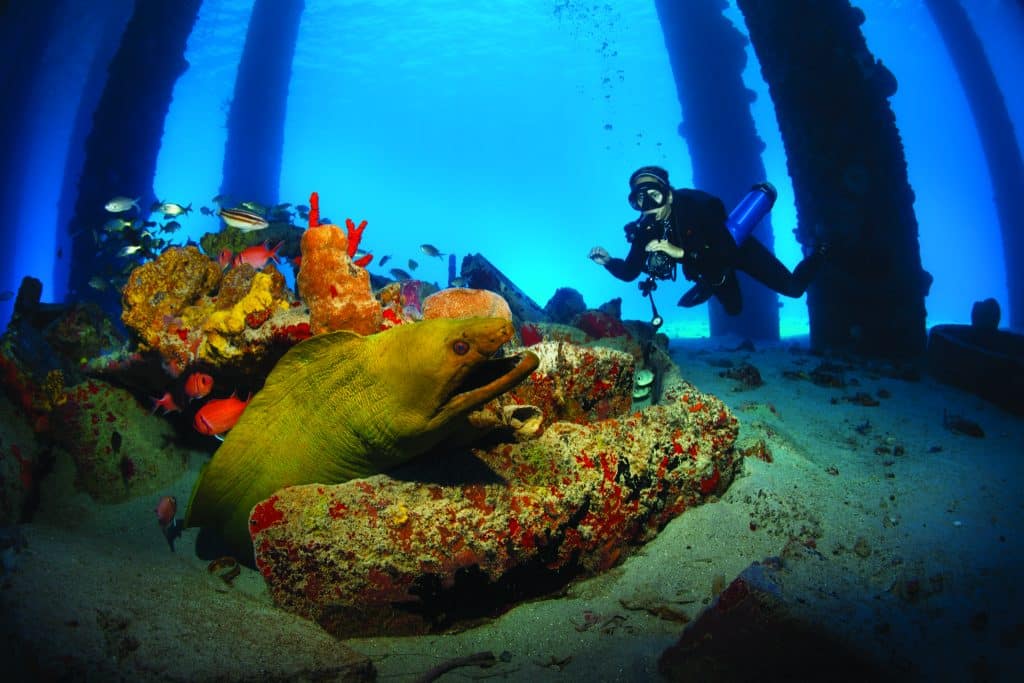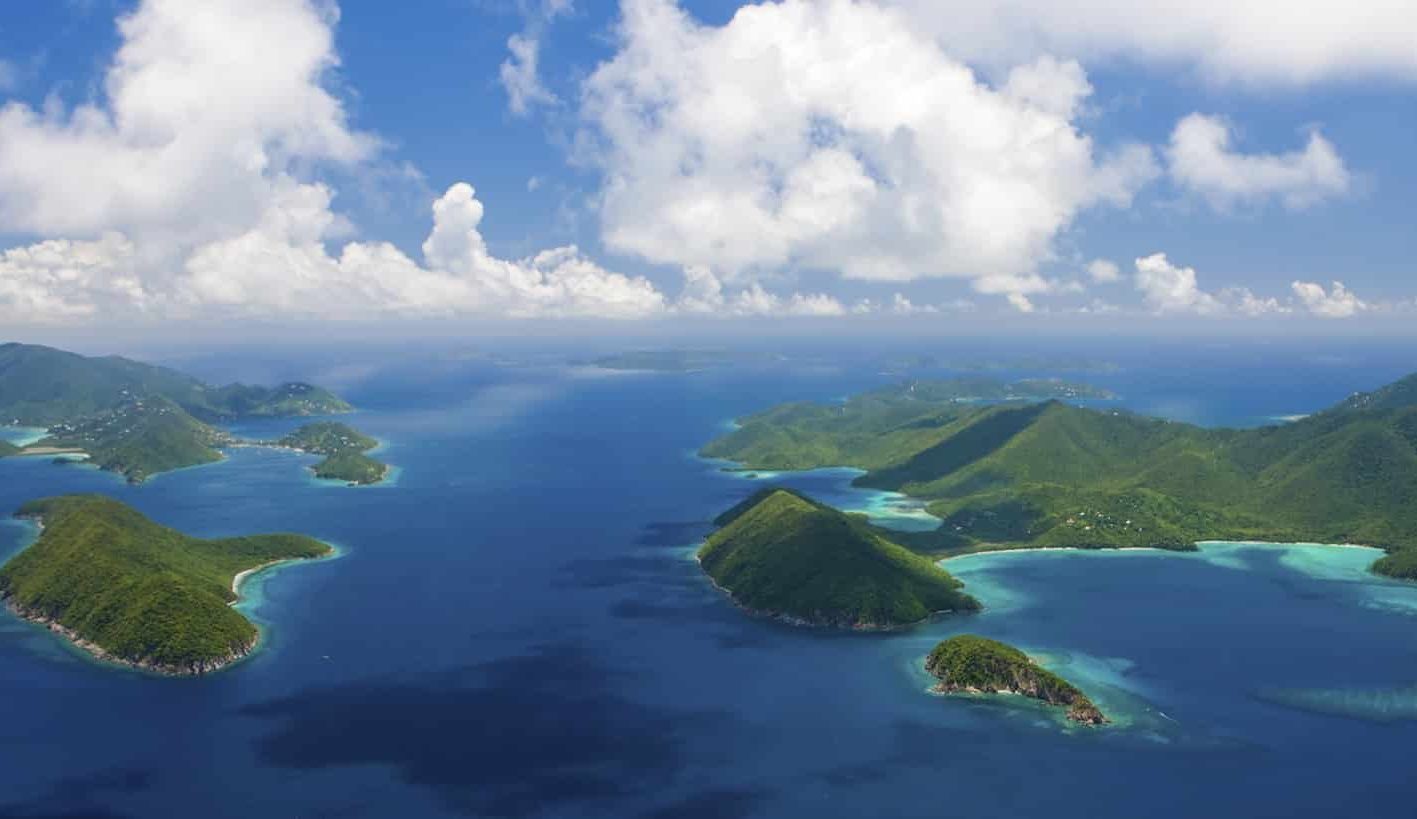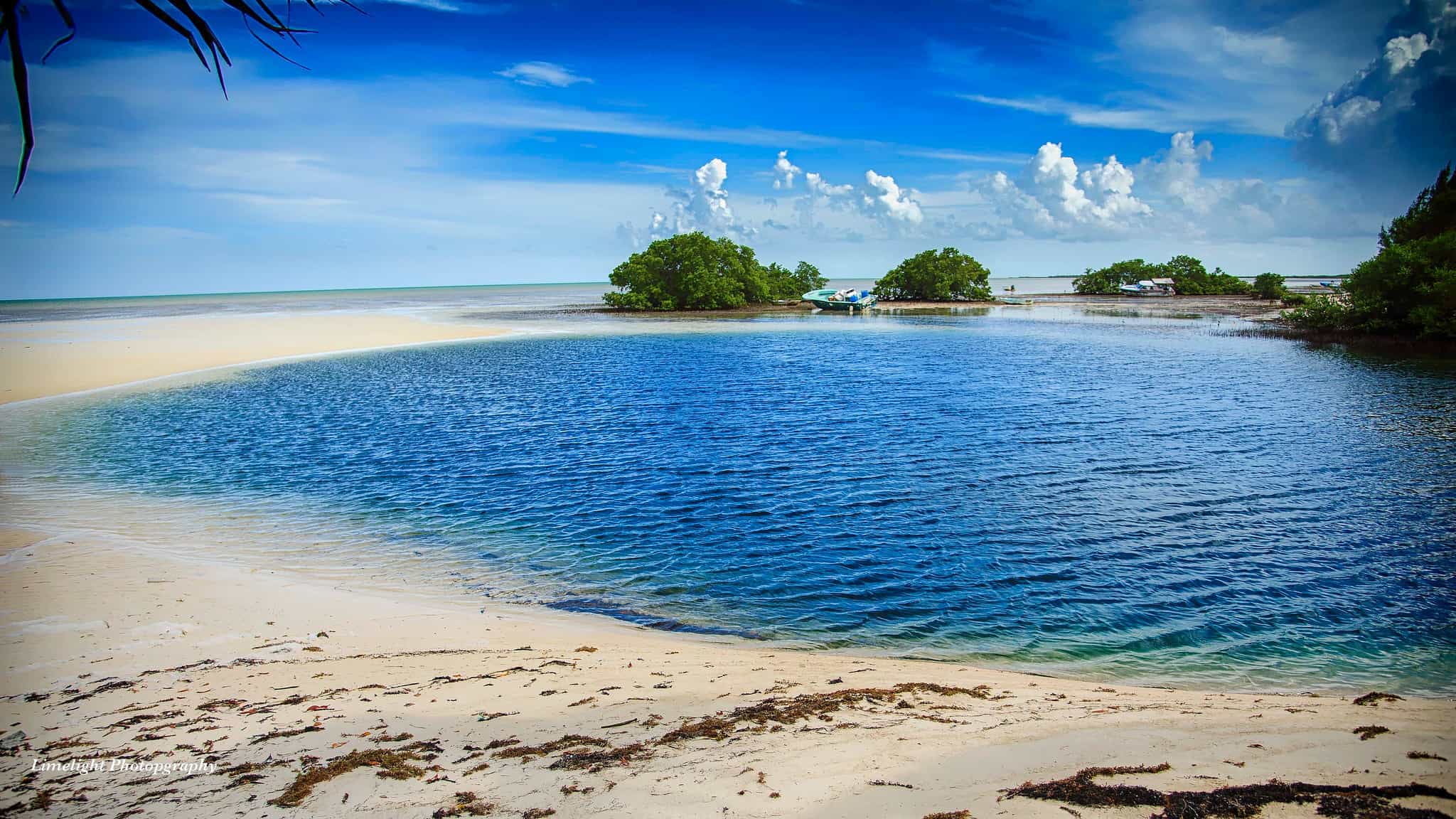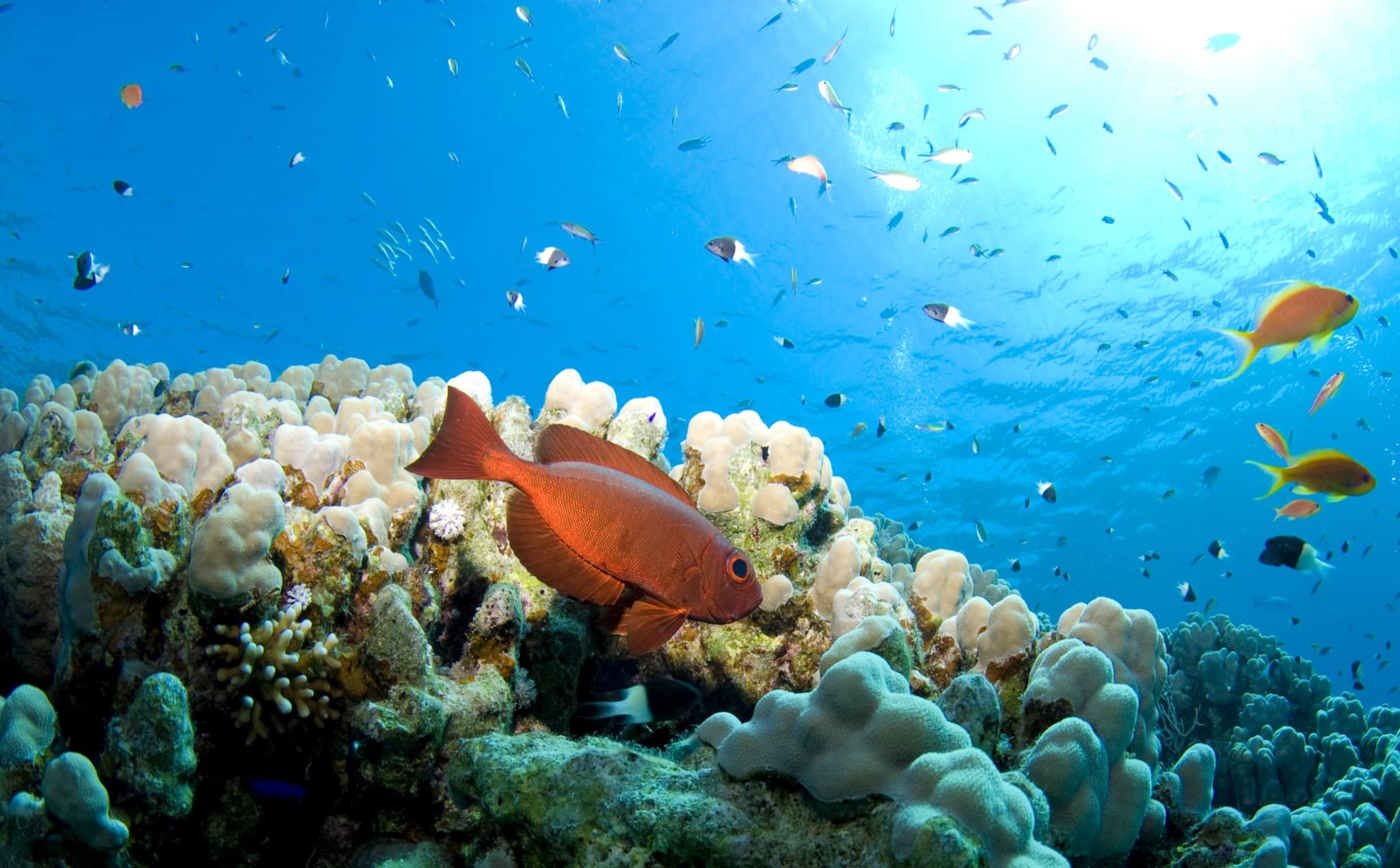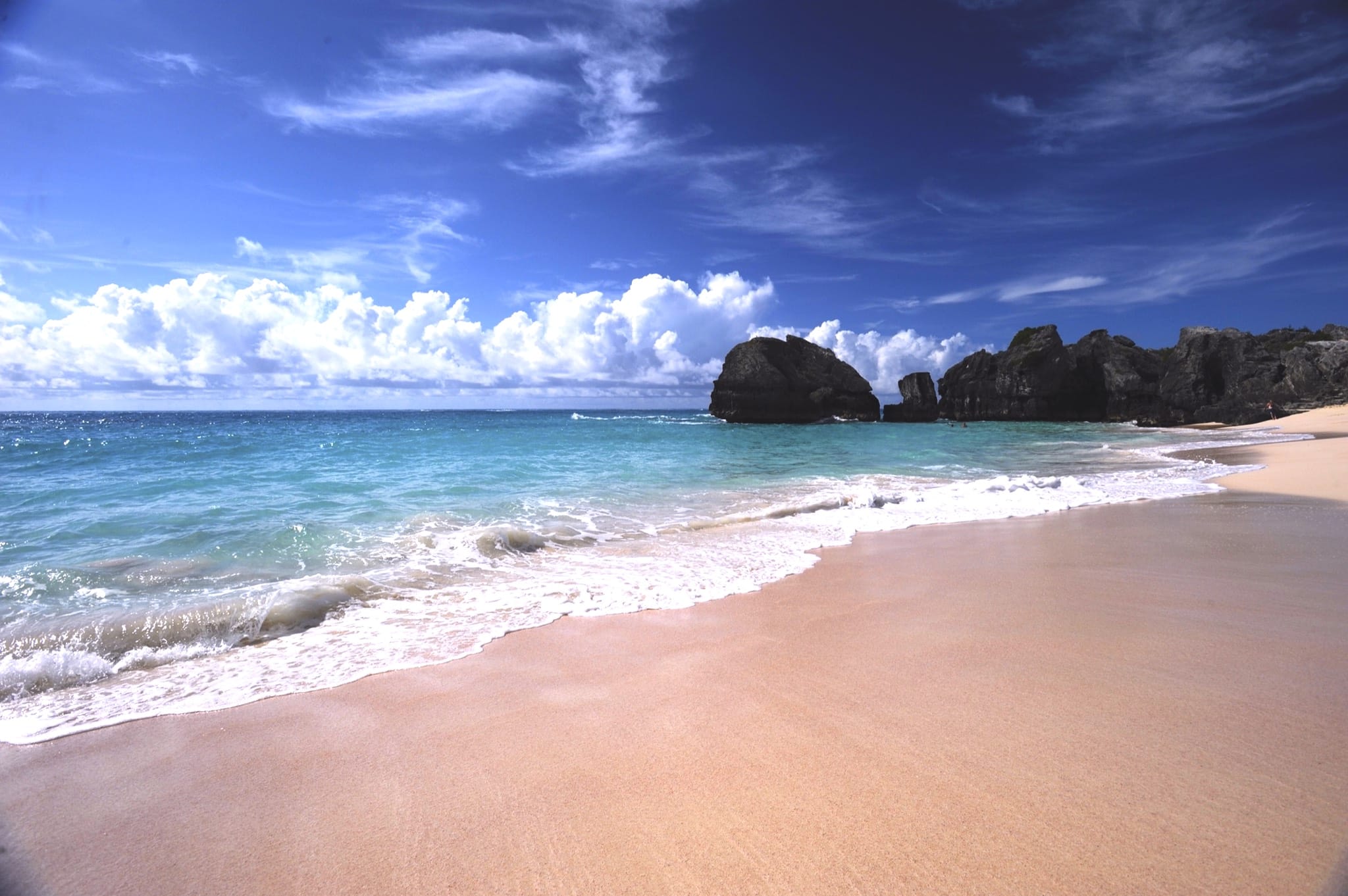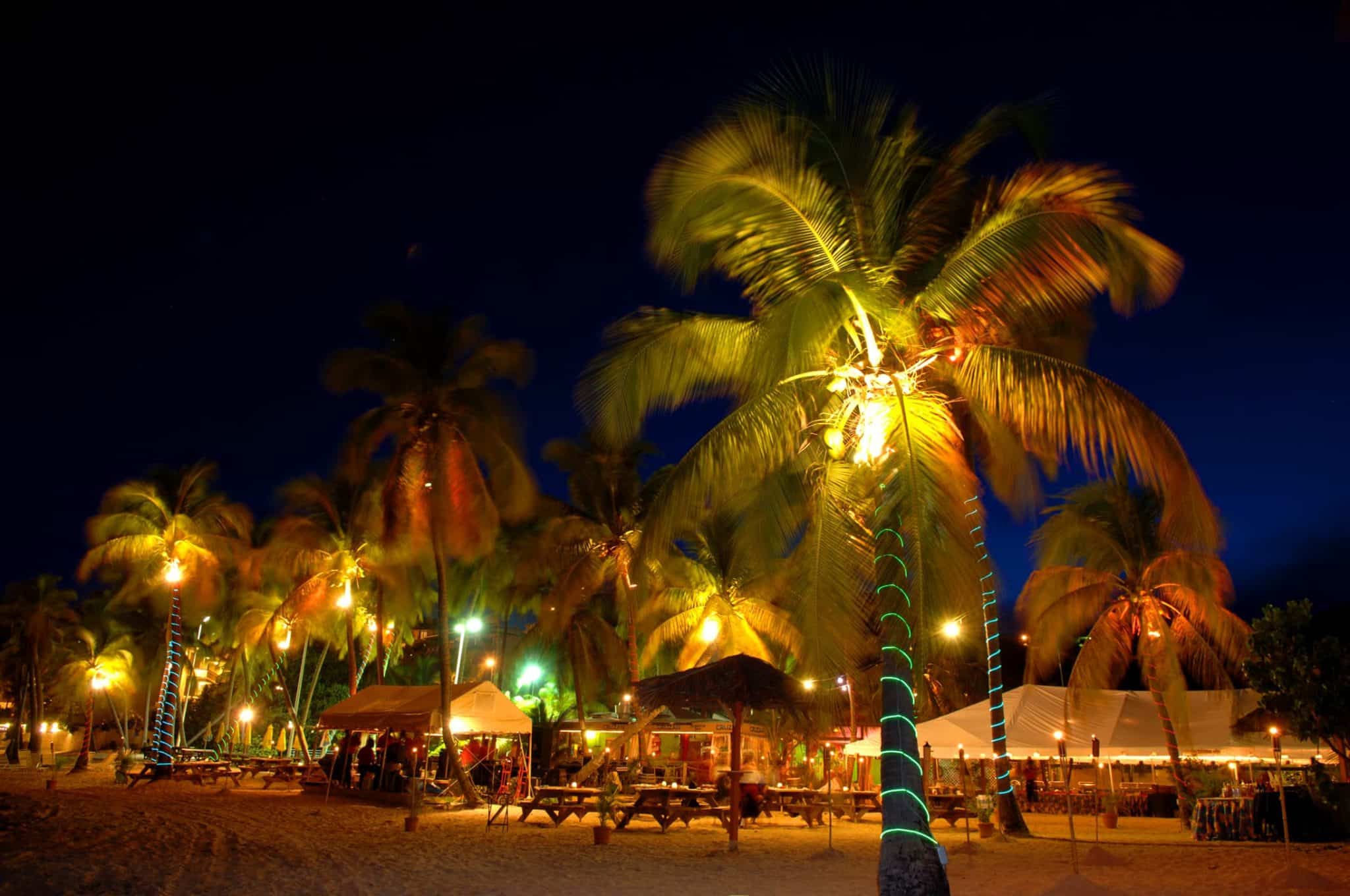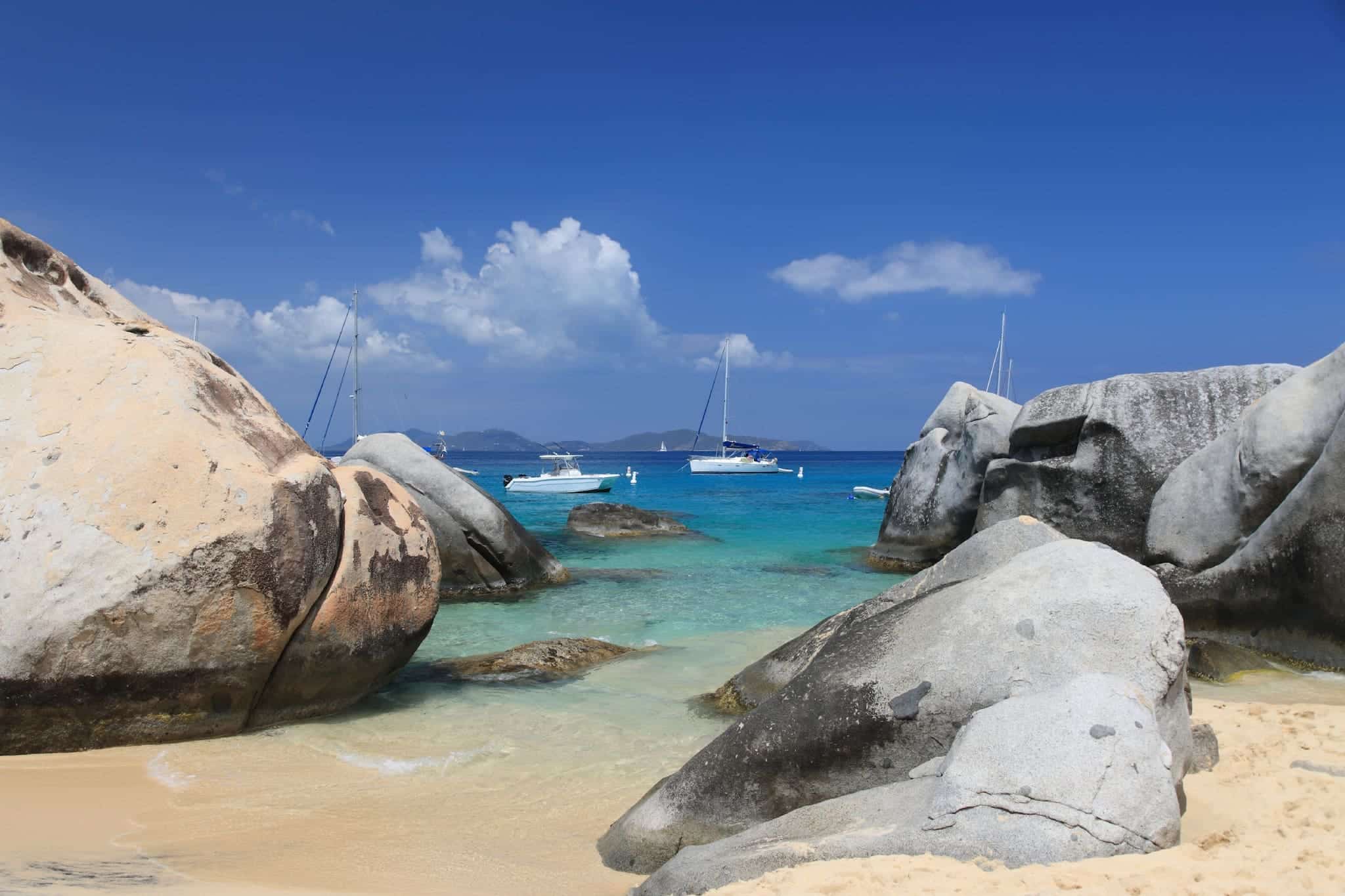Seen from above, the US Virgin Islands present a tantalizing and inviting hint of what lies below. Green hillsides and headlands jutting from scalloped coastlines create protective bodies of calm water where sailors drop anchor. White sand beaches fringed by coconut palms beckon swimmers and sun worshipers.
A stone’s throw from shore the transition of clear Caribbean waters from deep blues to vibrant aquamarines hints at the snorkel-worthy coral reefs that await. A submersion into these inviting waters reveals a whole new dimension to the island experience. Reefs teeming with colorful tropical fish begin just a few fin strokes from shore, and the mysteries of deep water are not far beyond.
St. John from Above
An aerial view of the island of St. John from the west reveals the shallows of Cruz Bay and a ring of reef around tiny Steven Cay. Though it is the smallest of the three US Virgin Islands, St. John has the most to offer snorkelers. Two-thirds of the island lies within a US National Park, and more than 12,000 acres of nearshore waters and shallow reefs are protected within the Virgin Islands Coral Reef National Monument. The island’s meandering shoreline includes more than two dozen beaches and protected bays where snorkelers can wade into calm water and make short swims to reefs swarming with tropical fish and seagrass meadows that hide cryptic marine life.
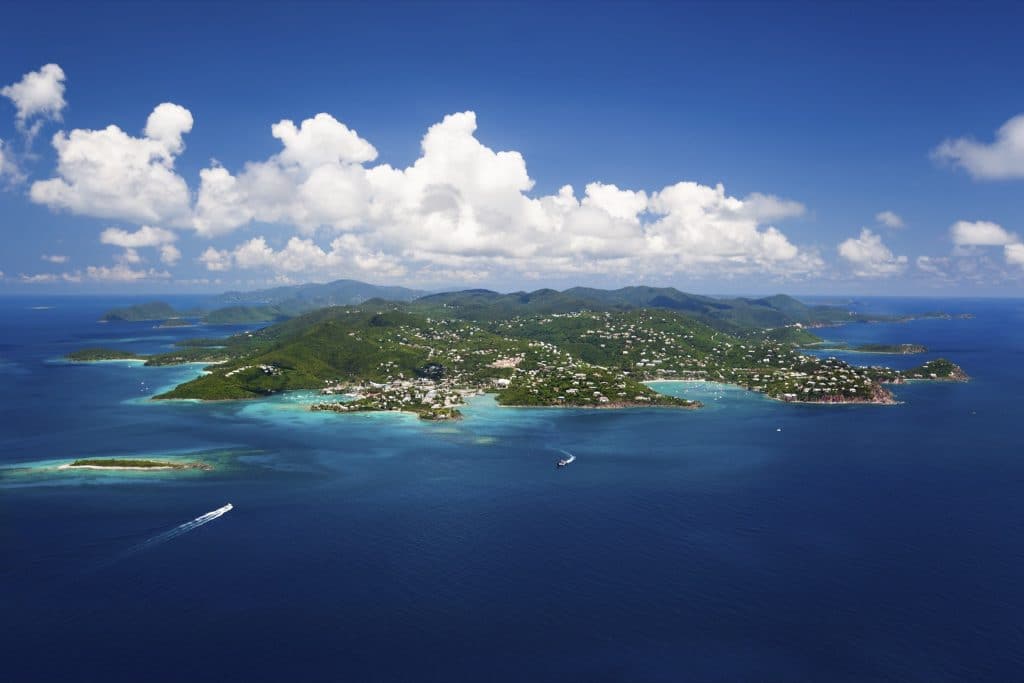
Sea Turtle Swim
Coral reefs along the northern coast of St. John are a favorite haven for sea turtles like this young green turtle, which is cruising among stands of elkhorn coral. These turtles provide delightful encounters for swimmers and snorkelers, and they serve as an important indication of the health of the reef. Green turtles can often be seen grazing in seagrass meadows, acting in the role of aquatic gardeners. Their noshing aerates the underlying sediment, culls old and dying plants, and helps keep algae growths under control. The undeveloped and protected beaches of St. Johns provided nesting sites for three species of sea turtles: green, hawksbill, and leatherbacks.
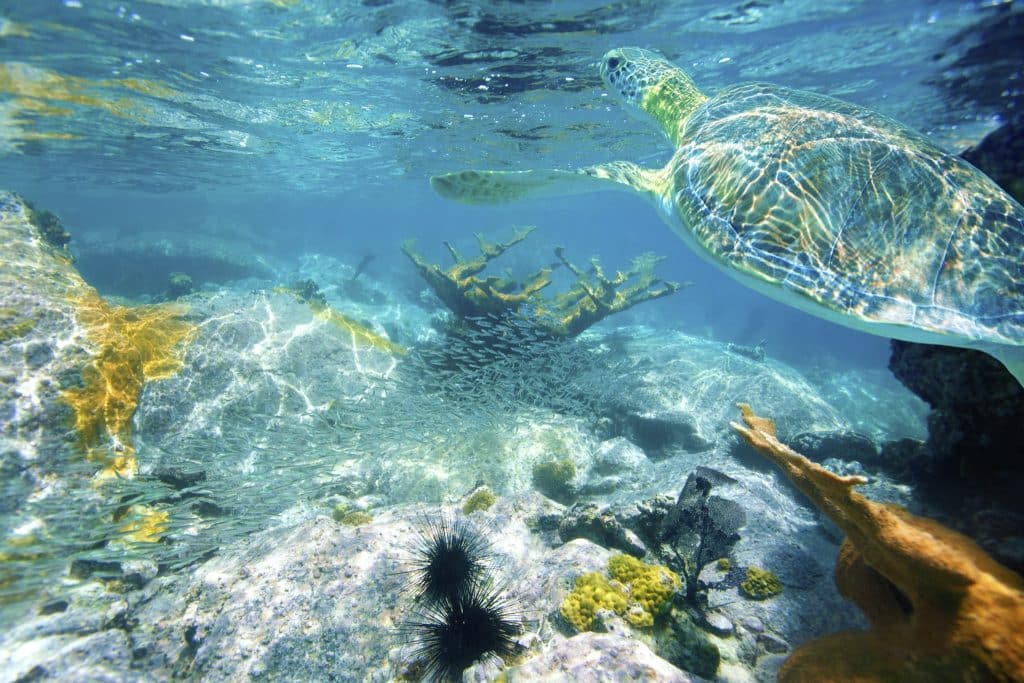
Hovering over Trunk Bay
Trunk Bay is one of the most popular snorkeling destinations on the island of St. John. Here, swimmers can take a self-guided aquatic tour by making a short swim from the beach to follow a marked snorkel trail through a labyrinth of boulder piles and shallow coral reefs. Along the way, a series of submerged signs mark points of interest and provide details on marine life and reef ecology. A highlight of the swim is the large formations of elkhorn coral that rise nearly to the water’s surface. Once threatened by human activity, these majestic corals have rebounded in this protected area, and their branch-like profiles shelter a menagerie of colorful reef fish.
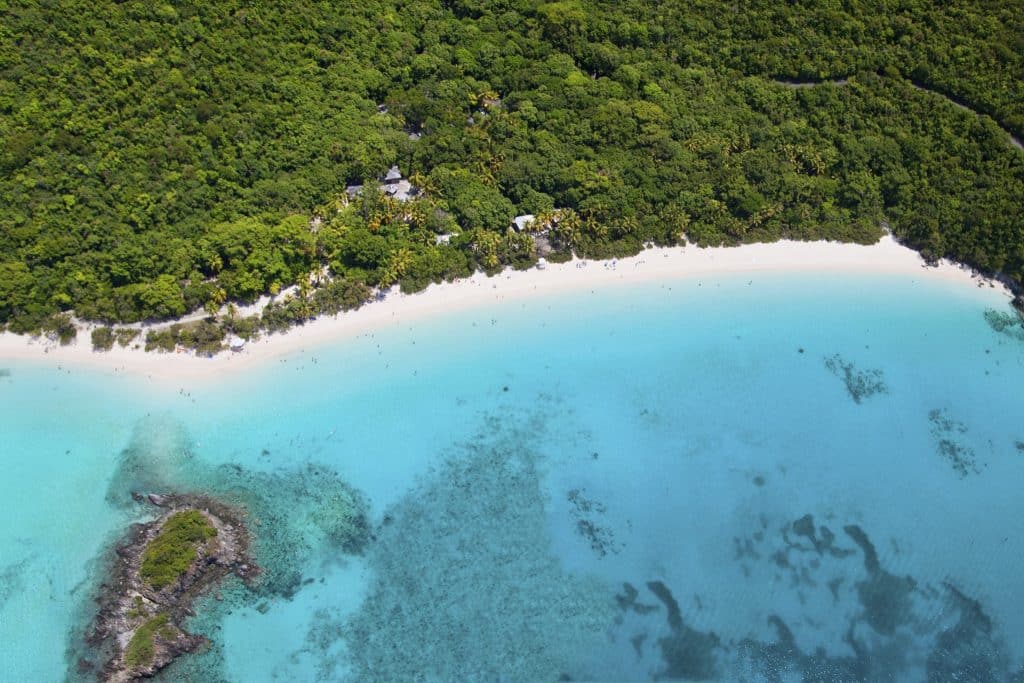
St. Thomas Aerial
On the far western end of St. Thomas, the uninhabited islands of West Cay and Salt Cay straddle the boundary between the Caribbean Sea and the Atlantic Ocean. These outlying islands see few visitors, as they are beyond the range of most day-trip excursion boats. For those who arrive by private or chartered boat, the reward is the often-deserted swath of sand on West Cay that opens to both bodies of water, ensuring calm conditions no matter which way the winds blow. Landbound travelers can access the area by driving to the end of the road to reach a similar cove known as the Mermaid’s Chair.
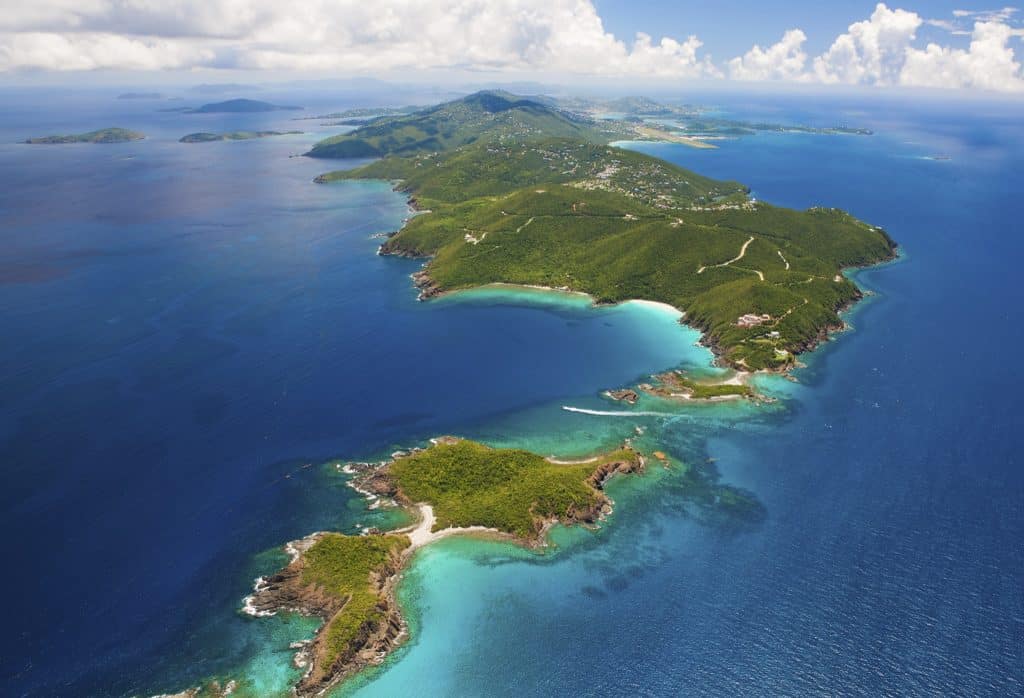
Fish School
More than 500 species of fish can be found in the waters surrounding the US Virgin Islands, ranging in size from tiny sea horses to rainbow-hued parrotfish, dainty angelfish, and toothy great Barracuda. The deeper waters just beyond are patrolled by game fish like marlin, tuna, bonito, and wahoo. On shores where the shallow reefs run close to deep water, vast schools of baitfish will sometimes move close to shore to escape the marauding gamefish. When this mass escape to the shallows takes place snorkelers become immersed in flitting, swirling clouds of small fish. Swimming into a bait cloud is an experience that can be both exhilarating and slightly disorienting.

Soaring over Buck Island
The small uninhabited island located off St. Croix’s northeastern coast has appeared on maps as Isle Verte, Isle a Cabrits, Pocken Eyland, and most recently Buck Island. Archaeological records indicate that indigenous Caribbean peoples visited the island as early as 2,000 years ago to harvest fish, lobsters, land crabs, and sea turtle eggs. In more recent history it was home to enslaved workers and later became a haven for practitioners of Obeah sorcery. In 1948, the Virgin Islands government named Buck Island and its surrounding reefs a territorial park. It was later transferred to the National Park Service, designated as a National Monument, and expanded to encompass more than 18,000 acres of surrounding waters.
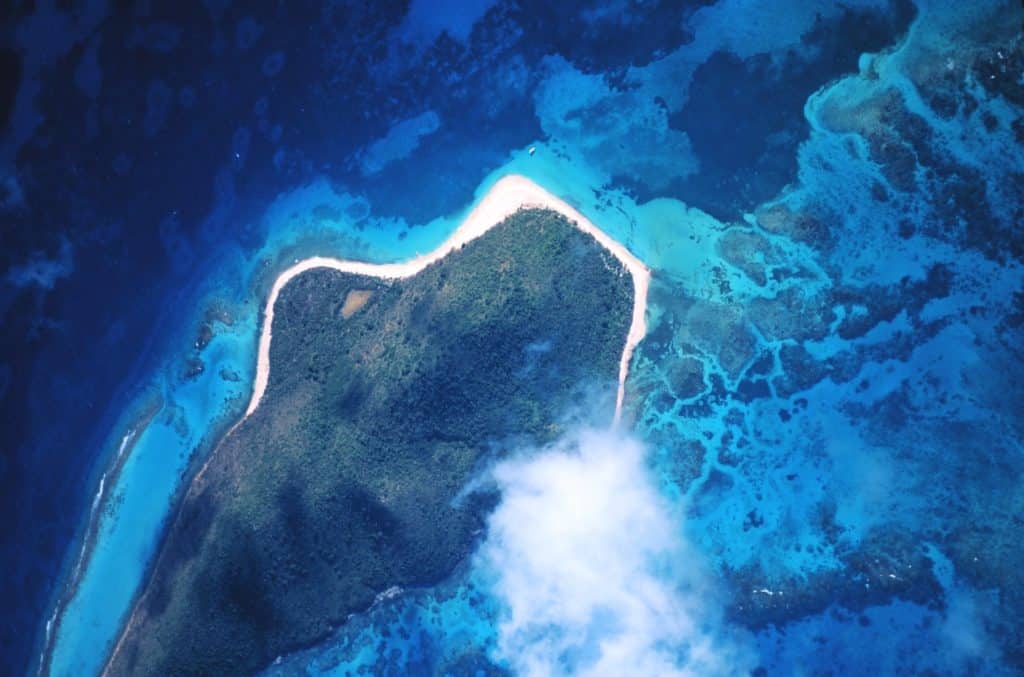
St. Croix Underwater
The island of St. Croix is a favorite with scuba divers. As the largest of the US Virgin Islands, it offers more than 50 miles of shoreline to explore. The most popular diving areas are found on the island’s north-central coast, where a sheer underwater rampart known as Cane Bay wall plummets from depths of 20 feet into the five-mile-deep abyss of the Puerto Rico Trench. Divers can also explore the hidden clefts and submerged valleys of the Salt River Canyon, explore shipwrecks and fish watch on shallow reefs. A majority of these sites are reached by boat rides from the island’s historic port city of Christiansted.
